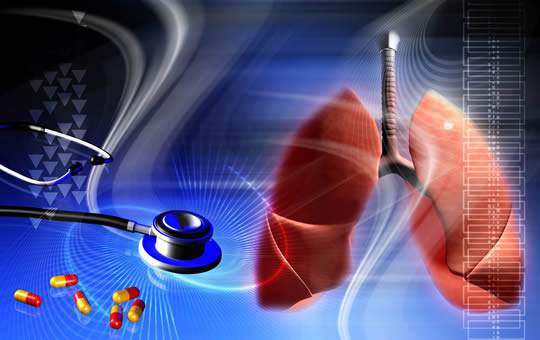Researchers Affirm Efficacy of Bitter Kola in Respiratory Diseases - Continued
The fundamental problem in asthma appears to be immunological. In immunologic model, asthma is a disease mediated by reaginic (IgE) antibodies bound to mast cells in the airway mucosa. On reexposure to an antigen, antigen-antibody interaction on the surface of mast cells triggers both the release of mediators stored in the cells granules and the synthesis and release of other mediators. The agents responsible for the early reaction mediating bronchoconstriction including histamine, tryptase and other neural proteases, leukotrienes C4 and D4, and prostaglandin causes muscle contraction and vascular leakage. The mechanisms underlying bronchial reactivity, such as ozone exposure, allergen inhalation, and infection with respiratory viruses also cause airway inflammation. In humans, the increase in bronchial reactivity induced by ozone is associated with an increase in the number of polymorphonuclear leukocytes found in fluid obtained by bronchial lavage or from bronchial mucosa biopsies. The increase in reactivity due to allergen inhalation is associated with an increase in both eosinophils and polymorphonuclear leukocytes in bronchial lavage fluid. Whatever the mechanisms responsible for bronchial hyperreactivity, bronchoconstriction itself seems to result not simply from the direct effect of the released mediators but also from their activation of neural or humoral pathways.

The researchers reviewed actions of all the major phytochemical component particularly Xanthone, Flavonoids and phenol. They confirmed that Xanthone potentiates its anti-asthmatic activity by dependently inhibiting the Ca2+ influx induced by either noreprinephrine or high K+, suggesting that xanthone might act as a blocker of both receptor-operated and voltage-dependent Ca2+ channels.
Furthermore, they review reported that xanthone causes increase in the level of intracellular cyclic adenosine 3', 5'-monophosphate (cAMP) but not cyclic guanosine 3', 5'-monophosphate (cGMP) content. They reported that xanthone showed inhibitory effects on cAMP phosphodiesterase. Intracellular levels of cAMP can be increased by _-adrenoceptor agonist, which increase the rate of its synthesis by adenyl cyclase (AC) or by phosphodiesterase (PDE) inhibitors such as xanthone, which slow the rate of its degradation.
On Flavonoids, the report stated it works by inhibiting platelet-activating factor (PAF), phospholipase A2 (PLA2) and phosphodiesterase (PDE).
Flavonoids protect against allergies, inflammation, free radicals and platelet aggregation. These observations support the importance of Gk in traditional medicine for the treatment of various conditions.
Flavonoids have been shown to exhibit a predilection to inhibit histamine release stimulated by IgE-dependent ligands Copper a transitional metal; most effectively block the inhibitory activity of flavonoids, possibly through a chelation mechanism. Zinc deficiencies can lead to excess copper levels, since zinc and copper compete for absorption. Also, a high intake of vitamin C and zinc decrease the absorption of copper.
Continued on
Page 1
Page 2
Page 3
Page 4




